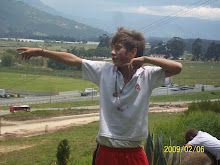Water properties
Before we begin looking at the properties of water, maybe you'd like to take our True/False quiz about water properties. Some of the answers may surprise you.
What are the physical and chemical properties of water that make it so unique and necessary for living things? When you look at water, taste and smell it - well, what could be more boring? Pure water is virtually colorless and has no taste or smell. But the hidden qualities of water make it a most interesting subject.
the water have 3 states
solid: for example, ice
Water pollution: is the contamination of
water bodies such as
lakes,
rivers,
oceans, and
groundwater. All water pollution affects organisms and plants that live in these water bodies and in almost all cases the effect is damaging either to individual species and populations but also to the natural biological communitis. It occurs when
pollutans are discharged directly or indirectly into water bodies. without adequate
treatment to remove harmful constituents.
Industrial waste is a type of waste produced by industrial activity, such as that of factories, mills and mines. It has existed since the outset of the industrial revolution.
Much industrial waste is neither hazardous nor toxic, such as waste fiber produced by agriculture and logging.
Toxic waste and chemical waste are two designations of industrial waste.
Sewage treatment can be used to clean water tainted with industrial waste.
OIL SLICKS
Oil slicks float on oceans and seas, covering them in a thick film of crude or refined petroleum oil. When freight ships carrying tens of thousands of tons of fuel crash, malfunction, or encounter harsh weather, they spill enormous amounts of oil into the water. Since oil and water don't mix, the oil spreads out into a layer that hovers, as one mass, on top of the ocean.
